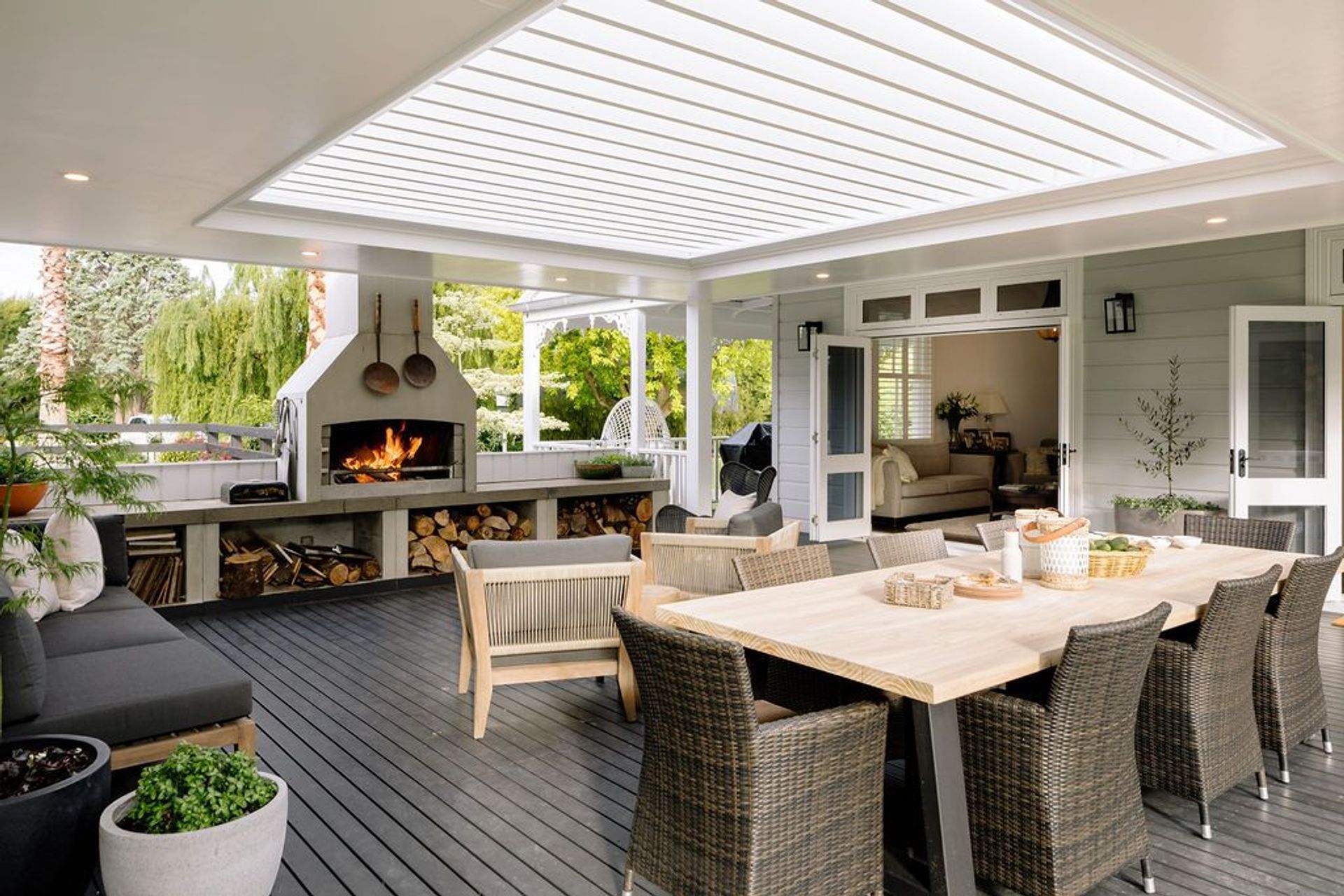Why New Zealanders are leaning even more into the louvre trend
Written by
19 April 2023
•
4 min read

Aotearoa is a country that loves and cherishes its domestic outdoor areas. We love hosting barbecues in our backyards, sunbathing on a soft lawn, and swimming in a refreshing pool.
It’s also a country with notoriously unpredictable weather – it’s all too common to plan meticulously for an afternoon gathering in the garden, take solace in a gloriously sunny morning – only to be greeted by a downpour after lunchtime.
For decades, louvres have been one of the most popular solutions to this problem: they offer a shaded respite against the elements while maintaining a connection to the outdoors. And like everything else in the architecture industry, they’re highly subject to changes and market trends.

A medium-density trend
One distinct change, according to NZ Louvres National Business Development Manager Todd Lay, is the opening up of the market.
“We’ve definitely seen a shift in the demographics of the customer base,” says Lay. “Louvres have traditionally been perceived as a premium product for a high-end home – but we’re seeing more and more that customers in medium-budget, smaller homes are taking this up.”
This may be related to the shrinking size of New Zealand’s new builds. Following the landmark amendment to the Resource Management Act and the subsequent change to medium-density residential standards in 2021, more medium-density housing is being built in New Zealand than ever before – and when there’s less square footage to work with, architects and homeowners need to be more creative to make the most of their space.
“A lot of townhouses have committed to installing louvres to maximise the available space,” says Lay. “The way the market is shifting in response to the cost of building and the new standards, the average home in New Zealand is slowly shifting from having a big lawn to utilising outdoor spaces more efficiently – and louvres are one of the best ways to do that.”
NZ Louvres has a range of different louvre offerings, and while detached louvre systems are commonly installed in larger homes, the company also provides louvres that can attach to the side of the house, extending straight over any bifold doors that open to the outdoor area – an ideal solution for medium density homes.

Creating an outdoor room
Many of these smaller types of homes are going even further, installing not only overhead protection in the form of louvres but also lateral protection with outdoor mesh barriers – an outdoor blind system for vertical screening that is particularly complementary to louvres. This keeps the bulk of the wind and rain out – and, crucially, allows for year-round al fresco dining and ‘outdoor’ living.
This ‘closing off’ of the space shaded by the louvres creates almost an entirely new room – a welcome addition to any medium-density home wanting for additional space. This new ‘outdoor room’ is a trend of its own, a natural endpoint following the installation of louvres.
“We’re seeing many of our customers installing multiple additional fixtures and customising these outdoor rooms after living with louvres for a while,” says Lay. “They’re adding speakers, bespoke outdoor heating, weather-rated TVs, you name it. It just means there’s more opportunity to utilise as much of your outdoor space as possible.”

The increased appetite for the efficient use of outdoor space has resulted in an increasing number of architects and designers specifying louvres into their plans, says Lay – not just for their pure functional benefits but also for their aesthetic appeal.
“It’s about utilising the space, yes, but also about the look,” he says. “Louvres give you clean straight lines. It can slot right into the aesthetic style of a modern minimalist home, or provide a striking addition to an older 1920s villa.”
And the cherry on top – for NZ Louvres products, no building consent is needed for louvres under 30 square metres, meaning it’s more than likely that medium-density builds can sidestep that particular hurdle.
“Considering all the benefits, it’s no wonder we’re seeing such an uptick in interest when it comes to smaller residential builds,” says Lay. “It just makes sense if you want to maximise the space.”
Learn more about NZ Louvres and its products and services.